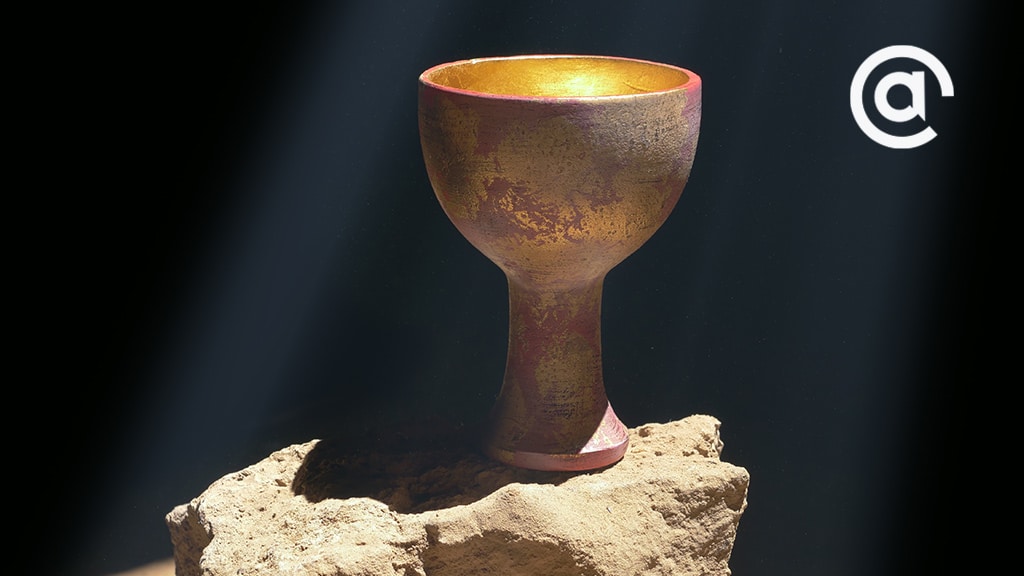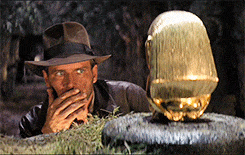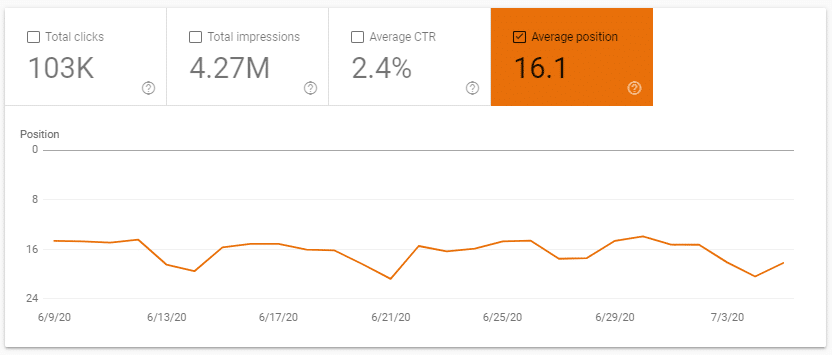Do you know all of the potential consequences of deleting that page from your site?Â
Take your finger off that button! Don’t move your mouse! Let’s take a look.
Deleting a page without reviewing the reporting and creating a plan could send your revenue, site visibility, CTR, and rankings rolling downhill like a massive boulder and suddenly you’re Indiana Jones and the Deletions of Doom.Â
Let’s review what’s at stake, weigh the options, and make a plan.
What’s at stake?
Revenue. If you’re an ecommerce site owner, do a little research or work with your SEO to find out the following details – before taking any steps:Â Â
- How many keywords does the page rank for?Â
- Where do they rank in the search features? Are any of the keywords in a highly valued position like #1 in the ten blue links, part of an answer box, a featured snippet, etc?
- How many and of what value are external links pointing to that page?
- How much traffic overall does the page bring in on average each month?
- How much revenue could you possibly lose?
If the numbers are small, rock and roll. 🙂 Delete the page, create a 301 redirect, and be on your way.Â
 Weigh your options
Weigh your options
Here’s a quick case study, where we saw eight product pages that were deleted from a website. Sounds innocuous enough, right? We pulled the data from the last 6 months to calculate their monthly averages around key metrics, and discovered:
- $4,150 in revenueÂ
- $107.38 average sale lost
- 182 keywords no longer have a working URL in the SERPs
- Â 26,629 monthly searches contribute to the loss of the site’s visibility
- 187 users lost – How’d we get here? Estimation of 26,629 impressions by our starting 2.7% CTR compared to our now 2.0% CTR. This comes out to about 187 fewer customers visiting the site each month.
- Site-wide CTR drop: 2.7% to 2.0%Â
- Average site SERP rank drop: – 2 positions! (from 14 to 16.1)
- 124 external (incoming) links to the deleted pages
The table below summarizes the losses as a result of the deleted pages:Â
To add salt to the wound, one of those keywords has, well HAD, the featured snippet. The holy grail of SEO. The Ark of the Covenant. The Rank Zero! When our SEO saw the URL was deleted – especially with no redirect plan in place – well it wasn’t pretty. 😣
After the URLs were deleted, the following events were observed in Google Search Console Impressions, CTR, and overall site rank.
Average CTR
The site has had an average CTR of 2.5 – 2.7% and dropped to 2.0% the day after the pages were removed.Â
Average Position (rank)
The site’s average went from 14 to 20.4 and has since rebounded to 16.1. To some this doesn’t look too bad. But as we’ve discussed before, even a one tenth (.1) drop in position can affect revenue exponentially (as seen in our SEO & PPC: A Lesson in Integrated Marketing post).
Impressions
While the site has a weekly dip in impression over the weekends, we normally see a range of 111,000 to 115,000 impressions. After the change we saw a new low of 105,000.
Plan redirects and check for collateral damage
Before you delete a page that is currently performing across metrics, first decide if you can repurpose it to meet users’ needs. If you can’t, determine where best to redirect the traffic. If you don’t have a page ready to replace the old page or product, you’ll need to either create one or find the closest related page, product, or category. Send the users to the next best thing they might like. Pro Tip: Don’t redirect pages to the home page of your site. It’s typically a poor user experience for your users.Â
Second, understand what collateral damage may have been done. Did you delete a group of related pages? Is the category page or tag now empty?Â
Third, check your site for internal links to the page and either update the links or remove them.
Finally, if the page being removed genuinely has no relation to the rest of the site, the best option in this case could be to redirect the traffic to the home page or allow a response code of 404 meaning “missing/not found” or 410 meaning “gone.” According to John Mueller during a Google Webmaster Central office-hours hangout Google really doesn’t care which response code you use. Some say a 410 error will get the URL out of the SERPs faster. Mueller says it’d be maybe a couple days difference in the removal.
Choose Wisely
Do your research and make the best decision for your users. If you need help, contact us for a free consultation! Our experts are available for SEO audits and to strategize growth opportunities for you.Â
Yes, the gifs switched movies. Try to keep up!


 Weigh your options
Weigh your options














